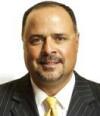Healthcare Chronicles: Crime Doesn't Pay - It Gets Reimbursed
August 05, 2009

by Dr. Barry L. Johnson, DDS, CDC, FAGD
This report originally appeared in the July 2009 issue of DOTmed Business News
I have been in the health care industry for nearly forty years, 19 as a provider and the last 20 working with payors focused on coding, reimbursement and cost containment issues. About 12 years ago I helped found a company that assisted payors to prevent unnecessary and wasteful claims payments. We used our proprietary software and expert clinicians to identify unnecessary and excessive services and charges. Two years ago our company was acquired and I stayed on and continued as president of our organization, which was now a division of a large analytics company that manages risk across the three different industries of property and casualty, health care and mortgage. Today, our company examines millions of claims a week, looking for potentially fraudulent claims and providers and sometimes, even patients. By identifying outlier patterns and by establishing billed services not supported by documentation in medical records, we're able to combat part of the problem of health care fraud.
Health care fraud costs our society between $70 billion and $300 billion per year. The government is aware of the problem but evolutions in our government and social developments have shifted resources from one area of interest to another. At one point, substantial justice department resources were committed to creating and sustaining task forces to investigate and prosecute health care fraud. Then, 9/11 occurred and most of the investigative resources from those task forces were diverted to homeland security. Only during the past two years have we begun to see assets re-committed to these task forces.
To understand the extent of the problem, take this example from Florida. Recently an investigation done by the federal government showed that somewhere in the neighborhood of two-thirds of the DME vendors weren't providing the services stated in their reimbursement requests. Many of these organizations were storefront operations, generating false claims, using stolen lists of patient names, and providing no services or supplies to anyone.
One reason criminals can successfully file false reimbursement requests is because many claims are processed through auto adjudication. That means claims submitted from providers can be processed by a computer, a payment determined and check cut and mailed to the provider with no human oversight occurring during the process. This happens millions of times a day with billions of dollars paid and in many cases no human ever looked at any step in the process. We want to believe that computers can do everything and they are very effective at consistently applying rules, provided that they have been programmed correctly and the safeguards of editing systems and fraud prevention systems are implemented, updated regularly and fully operational and not by-passed unintentionally. The reality is that there are defects in logic, loopholes in some rules and gaps in the security, and if a provider finds some creative billing tactic that gets approved every time, even if it's not correct, he or she often continues to exploit the opportunity.
This report originally appeared in the July 2009 issue of DOTmed Business News
I have been in the health care industry for nearly forty years, 19 as a provider and the last 20 working with payors focused on coding, reimbursement and cost containment issues. About 12 years ago I helped found a company that assisted payors to prevent unnecessary and wasteful claims payments. We used our proprietary software and expert clinicians to identify unnecessary and excessive services and charges. Two years ago our company was acquired and I stayed on and continued as president of our organization, which was now a division of a large analytics company that manages risk across the three different industries of property and casualty, health care and mortgage. Today, our company examines millions of claims a week, looking for potentially fraudulent claims and providers and sometimes, even patients. By identifying outlier patterns and by establishing billed services not supported by documentation in medical records, we're able to combat part of the problem of health care fraud.
Health care fraud costs our society between $70 billion and $300 billion per year. The government is aware of the problem but evolutions in our government and social developments have shifted resources from one area of interest to another. At one point, substantial justice department resources were committed to creating and sustaining task forces to investigate and prosecute health care fraud. Then, 9/11 occurred and most of the investigative resources from those task forces were diverted to homeland security. Only during the past two years have we begun to see assets re-committed to these task forces.
To understand the extent of the problem, take this example from Florida. Recently an investigation done by the federal government showed that somewhere in the neighborhood of two-thirds of the DME vendors weren't providing the services stated in their reimbursement requests. Many of these organizations were storefront operations, generating false claims, using stolen lists of patient names, and providing no services or supplies to anyone.
One reason criminals can successfully file false reimbursement requests is because many claims are processed through auto adjudication. That means claims submitted from providers can be processed by a computer, a payment determined and check cut and mailed to the provider with no human oversight occurring during the process. This happens millions of times a day with billions of dollars paid and in many cases no human ever looked at any step in the process. We want to believe that computers can do everything and they are very effective at consistently applying rules, provided that they have been programmed correctly and the safeguards of editing systems and fraud prevention systems are implemented, updated regularly and fully operational and not by-passed unintentionally. The reality is that there are defects in logic, loopholes in some rules and gaps in the security, and if a provider finds some creative billing tactic that gets approved every time, even if it's not correct, he or she often continues to exploit the opportunity.








